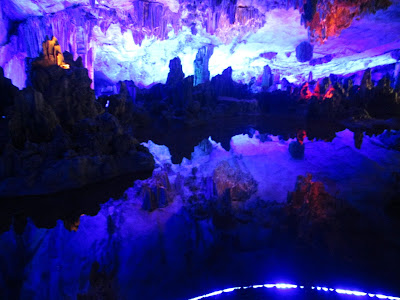

I made a special request for a room with one of these little tea table nooks, which overlooks a busy pedestrian street in Guilin.


Price list for various items in my hotel room.

There was a great little hotpot restaurant right next door to my hotel.


For about $20, the Four Rivers Two Lakes evening cruise is well worth the price.


"Cormorant fishing is a traditional fishing method in which fishermen use trained cormorants to fish in rivers. Historically, cormorant fishing has taken place in Japan and China since about 960 AD." The cormorant (with a string tied around its neck so it can't swallow food) is used to catch the fish, which the fisherman then retrieves from the bird's throat.

People were out at this fountain every day feeding the fish with baby bottles attached to a stick. The fish actually suck on the bottle's rubber nipple.

Often in China looseleaf tea is served directly in the glass, and after a few minutes slowly sinks to the bottom. At most tea cafes you're given several free refills of hot water.

With its many karsts, caves, lakes, and rivers, in China the Guilin region has traditionally been known as "the best landscape under heaven."

This boy came up to me in downtown Guilin and asked if he could practice speaking English. While he spoke with me, his mother stood off to the side filming the whole thing.

A special slicer for making cucumber face masks.

Using the double broom sweep method.

On my final day in Guilin someone suggested I visit the local caves, which truned out to be a great recommendation.



Inside the caves, Chinese tourists often touched the turtles, probably for good luck.


I took this photo at Guilin's Solitary Beauty Peak (Ming Prince Mansion).

No comments:
Post a Comment